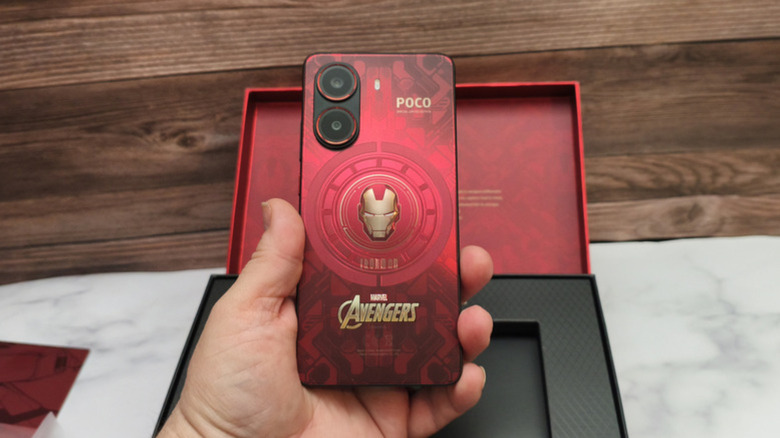3 Cool Features That Phones Have Overseas, But Not In The US
In the U.S., we have a pretty basic selection of smartphones to choose from. Yes, we have foldables like the Moto Razr+ and the Pixel 9 Pro Fold, and we even have a phone or two with a stylus, like the Samsung Galaxy S25 Ultra, so that's fun. But when you look across the pond (on either side) there is a wealth of smartphone variety to be had, that the U.S. simply doesn't see, which is a shame. If variety is the spice of life, the U.S. phone market could definitely use some seasoning.
So, if the features aren't available here, why does it matter? You can't buy it here, so what's the point? It's important to keep an eye on what's going on over there, because it provides context for what we have over here — and what we don't. So, without further ado, here's a look at some of the phones you can't have, and why that's a shame.
More foldable form factors
Here in the U.S., we have flip-style foldables, like the Moto Razr+ and book-style foldables like the Samsung Galaxy Fold 6. Overseas, there are more form factors to play with. In a commercial capacity, Huawei has a tri-folding phone available for purchase today, but only in China, and only if you don't want any Google services on it. Those are two fairly hefty compromises.
Overseas phones have also seen some "outie" book-style foldables that fold back, exposing the entire screen to the outside when folded, which has the added benefit of giving you a screen on both sides of the phone when it's closed. Huawei also just teased a flip style foldable that the Verge described as "weirdly wide". This is a phone that closes like a flip but opens to the side into a landscape orientation. This makes a lot of sense since a lot of tablets are primarily used in landscape.
Samsung teased a tri-folding phone coming soon — likely in 2025, so the U.S. won't be missing out on that particular style for long. But phones overseas tend to get more daring when it comes to design.
Branded partnerships
Speaking of daring phone design, another thing that foreign phone markets tend to play around with comes in the form of brand partnerships. Most recently, Marvel has been working with Poco to build the Poco X7 Pro Iron Man edition. Dear reader, this is not a case where a brand shipped a few extra wallpapers and called it a day.
The Poco X7 Pro Iron Man edition is an experience in itself, starting with the box it ships in. The entire box and accessories that ship with the phone are all branded appropriately, covered in mythos of Iron Man and a few quotes from the superhero.
Meanwhile, the phone itself is decorated with Iron Man on the back, complete with a case that protects the phone without obscuring the artwork on the outside. Once you power up the phone, the software is all tweaked with Iron Man wallpapers and icon packs to choose from.
This is just one example of many brand deals that overseas phone makers have made with brands. Honor has been working with Porsche Design for the past few years, and Samsung even partnered with Thom Browne for special edition foldables for its home Korean audience — as if they weren't already expensive enough.
Super fast charging
Ok, I know I tend to beat this war drum every time I review a OnePlus phone, but it's worth repeating. Phones overseas generally ship with incredibly fast charging, and they tend to ship with chargers in the box. This is something the U.S. has generally shied away from, and it's time to stop.
Circling back to OnePlus, the BBK-owned brand has always kept its fast-charging chop in every phone it has shipped, including those to the U.S. But OnePlus is the exception and not the rule, and that needs to change. Fast charging is great for situations where you would normally need to tote around a battery pack with you. Instead, with fast-charging phones, you can plug in your phone for literally 10 minutes and get enough juice to last the rest of the day.
Alternatively, from an environmental standpoint, you can use fast charging to fundamentally alter your relationship with your phone's battery. You won't need to charge your phone overnight anymore. Rather, you can just plug it in for literally a few minutes whenever it needs to charge. You can also set your battery to only charge to a set limit to lengthen your battery's useful life.
Put simply, there are a lot of reasons why fast charging should be the standard everywhere, and the U.S. lags behind in a big way. What we have now is simply not good enough.



